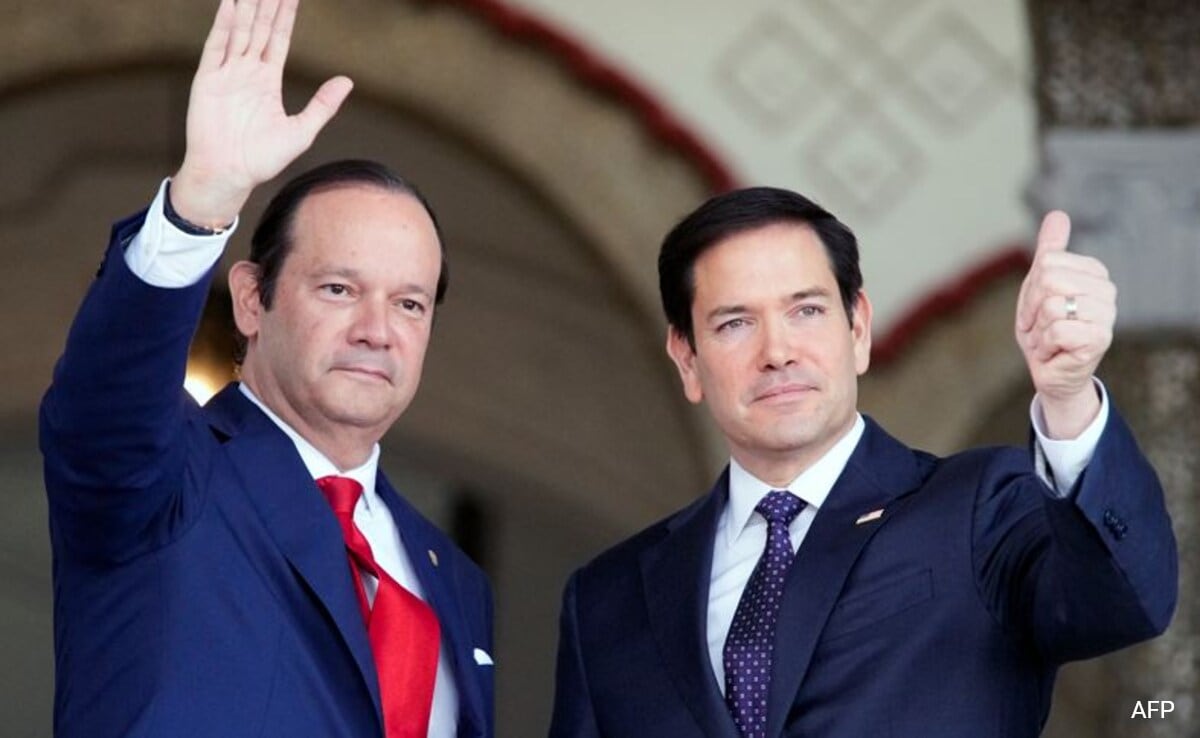US Secretary of State Marco Rubio entered talks Sunday with Panama’s leader to press President Donald Trump’s demand that the United States take back control of the Panama Canal.
Trump has refused to back down on threats to seize the vital waterway and it remains unclear what Rubio can achieve diplomatically that would please him, with Panama firmly rejecting any claims against its sovereignty.
Rubio, in his first meeting abroad as the top US diplomat, walked past an honor guard outside the whitewashed walls of President Jose Raul Mulino’s official residence in the tropical capital’s old quarter.
Rubio shook hands with Foreign Minister Javier Martinez-Acha and flashed a thumbs-up sign before heading into talks with Mulino. They made no immediate comments to the press.
Rubio later in the day will tour the Panama Canal, the crucial link between the Atlantic and Pacific Oceans through which some 40 percent of US container traffic passes.
Trump and Rubio say that US competitor China has gained too much power around the canal and could shut it down in a potential conflict, with catastrophic consequences for the United States.
Mulino, in response to pressure, ordered an audit of a Hong Kong based company that controls ports on both sides of the canal.
Speaking to reporters on Friday, Trump said it was not enough and that Panama has “totally violated” the understanding when the United States handed back the canal in late 1999.
“They’ve already offered to do many things,” Trump said Friday of Panama, “but we think it’s appropriate that we take it back.”
Protests for sovereignty
Scattered protests broke out in Panama ahead of Rubio’s visit, with an effigy of him in a red, white and blue suit set on fire.
Diojenes Sanchez, a professor who took part in the protests, vowed to defend Panama’s sovereignty.
“We firmly reject the claims of the United States to turn Panama into a protectorate and colony,” he said.
The Panama Canal — which Trump has dubbed as a modern “wonder of the world” — was built by the United States at the cost of thousands of lives of laborers, mostly people of African descent from Barbados, Jamaica and elsewhere in the Caribbean.
The United States maintained control of the canal when it opened in 1914 but began to negotiate following deadly riots in 1964 by Panamanians angered over foreign control.
Jimmy Carter sealed the agreement that gave the canal to Panama at the end of 1999, with the late president seeing a moral imperative for the United States to respect a smaller but still sovereign country.
Trump takes a vastly different view and has returned to the “big stick” approach of the early 20th century, in which the United States threatened force to have its way, especially in Latin America.
In his first week in office, Trump prepared massive tariffs on Colombia to force the US ally to take back deported citizens on military planes, after the country’s leftist president complained that they were not being treated in a dignified way.
Just as Rubio started his trip, Trump on Saturday signed off on sanctions on the top three US trading partners — Canada, Mexico and China.
Rubio, the first Hispanic secretary of state and a devout Catholic, started his Sunday in Panama City attending Mass at a church built four centuries ago in the old city.
He will travel to four more Latin American countries — El Salvador, Costa Rica, Guatemala and the Dominican Republic — where he is expected to press for cooperation on Trump’s key priority of deporting migrants from the United States.
(Except for the headline, this story has not been edited by NDTV staff and is published from a syndicated feed.)
